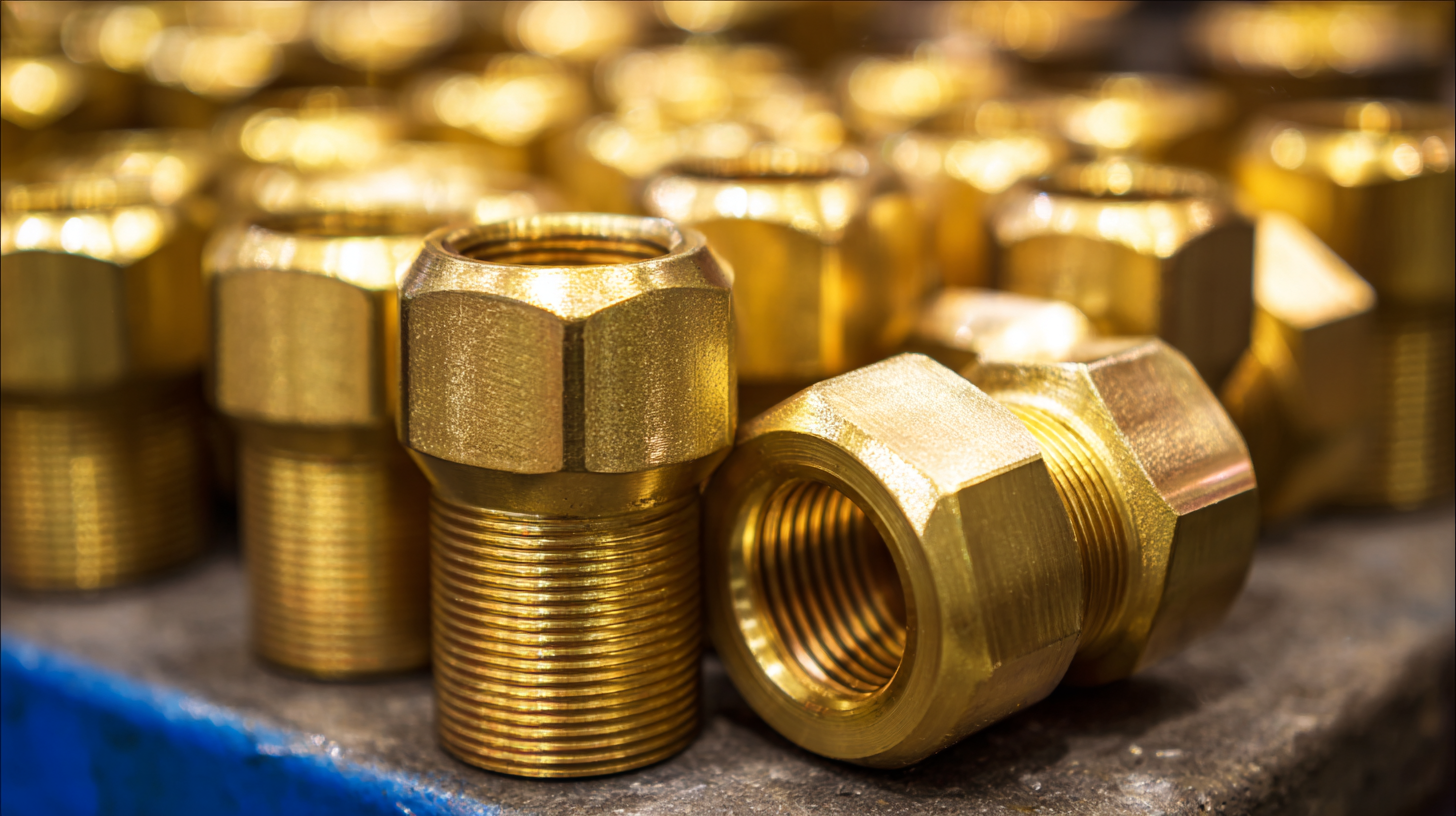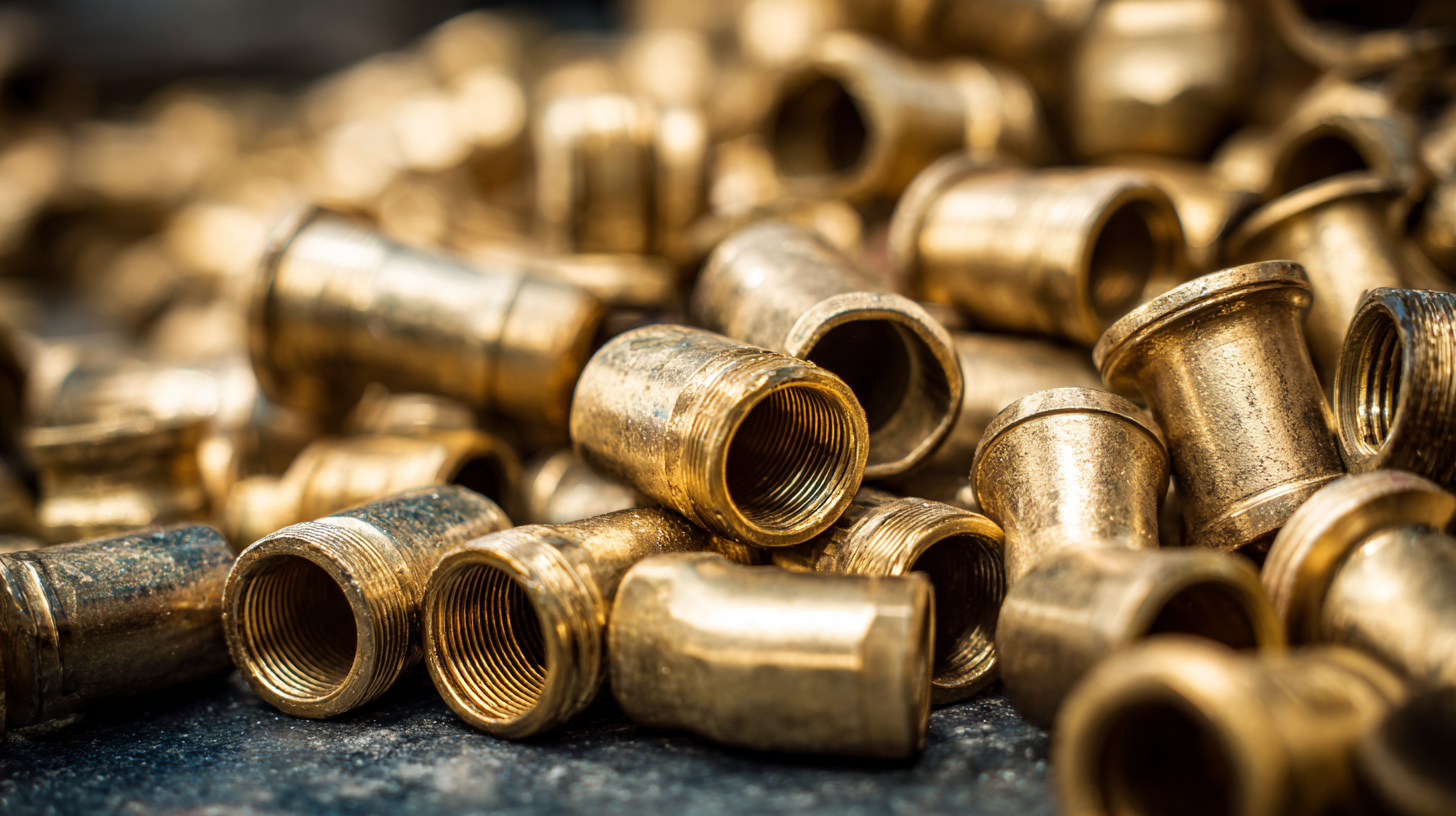7 Essential Tips for Sourcing High-Quality Brass Elbows in Today's Global Market
In today's fast-paced global market, sourcing high-quality brass elbows has become increasingly complex yet essential for ensuring the durability and efficiency of plumbing and piping systems. As industries evolve and manufacturers emerge from various corners of the world, navigating the myriad options requires a keen understanding of what constitutes quality in brass fittings.

This blog post will provide you with seven essential tips to streamline your sourcing process, helping you identify the best suppliers and products that meet your exact specifications. Whether you're a seasoned procurement professional or a newcomer to the industry, these insights will empower you to make informed decisions, ultimately enhancing the reliability of your plumbing projects with superior brass elbows.
Join us as we delve into the critical factors that can elevate your sourcing strategy and ensure you always have access to the finest materials available.
Identifying Reliable Suppliers in the Global Brass Market: Key Metrics to Consider
When sourcing high-quality brass elbows in today's global market, identifying reliable suppliers is crucial. Start by evaluating a supplier's track record by checking their industry presence and reputation. Look for companies that have established themselves as leaders in the brass manufacturing sector. Customer reviews and testimonials can offer insights into their reliability and product quality, helping you narrow down your options.
Another key metric to consider is the supplier's quality assurance processes. Ensure they adhere to international standards and certifications, as this demonstrates their commitment to maintaining high-quality production. Additionally, examine their supply chain transparency, which includes sourcing raw materials responsibly and having traceability for their products. A reliable supplier should also provide clear communication during the procurement process and be open to addressing any concerns or inquiries promptly, fostering a partnership built on trust and efficiency.

Evaluating the Quality Standards of Brass Elbows: Understanding Industry Certifications
 When sourcing high-quality brass elbows, understanding industry certifications is crucial for ensuring product quality. Various certifications, such as ISO 9001 and ASTM standards, indicate that manufacturers adhere to stringent quality management systems and technical specifications. These certifications not only reflect the reliability of the manufacturing processes but also assure buyers of consistency in product performance. Familiarizing yourself with these standards can aid in the selection of suppliers that prioritize quality and compliance.
When sourcing high-quality brass elbows, understanding industry certifications is crucial for ensuring product quality. Various certifications, such as ISO 9001 and ASTM standards, indicate that manufacturers adhere to stringent quality management systems and technical specifications. These certifications not only reflect the reliability of the manufacturing processes but also assure buyers of consistency in product performance. Familiarizing yourself with these standards can aid in the selection of suppliers that prioritize quality and compliance.
Furthermore, evaluating a supplier's certifications can help identify those who invest in quality control and continuous improvement. Look for manufacturers that hold certifications relevant to the specific application of brass elbows, such as plumbing, HVAC, or marine uses. This expertise often translates to better durability and performance. By prioritizing certified suppliers, you can mitigate risks associated with substandard products, ultimately supporting your project's success in the increasingly competitive global market.
The Impact of Material Composition on Durability: Analyzing Brass Alloys and Their Properties
When sourcing high-quality brass elbows, understanding the material composition is crucial. Brass is an alloy primarily made up of copper and zinc, but the specific proportions can significantly influence the material's durability and performance. For instance, a higher copper content often enhances corrosion resistance, making the fittings more suitable for outdoor or moisture-prone applications. Conversely, adjusting the zinc ratio can improve malleability, allowing for better shaping and fitting during installation.
Furthermore, the inclusion of trace elements can impart unique properties to brass alloys. Elements such as lead, tin, or nickel can enhance machinability and strength, which can be essential for specific applications in plumbing or HVAC systems. However, it’s important to be mindful of industry standards and regulations regarding these additives, as they can impact the overall health and environmental considerations associated with their use. Ultimately, a thorough analysis of the brass alloy being sourced will ensure that the desired balance of durability, workability, and safety is achieved for your specific project needs.
Navigating Price Fluctuations: Strategies for Cost-Effective Brass Sourcing in 2023
In 2023, the brass market is characterized by significant price fluctuations driven by global supply chain disruptions and increased demand. According to the International Brass Association, the average price of brass has surged by approximately 15% over the past year, primarily due to rising copper and zinc costs, which account for around 70% of brass composition. Sourcing high-quality brass elbows at a reasonable price necessitates strategic planning and market awareness.
One effective strategy for cost-effective sourcing is to engage in long-term contracts with suppliers. A recent report by the Metal Industries Association highlighted that companies that secured fixed-price contracts experienced a 10% lower cost on average than those relying solely on spot purchasing. Additionally, diversifying suppliers across different regions can mitigate risks associated with local market volatility. By establishing relationships with both domestic and overseas manufacturers, businesses can better navigate market fluctuations while ensuring a steady supply of quality components.
Monthly Price Trends of Brass Elbows in 2023
Leveraging Technology for Quality Control: Innovative Tools in the Brass Manufacturing Process
In the rapidly evolving landscape of brass manufacturing, leveraging technology for quality control has become indispensable. Innovative tools and systems are now at the forefront of the production process, allowing manufacturers to maintain high standards while minimizing waste. Advanced software solutions utilize real-time data analytics to monitor production metrics, ensuring that brass elbows meet the stringent specifications required for various applications. This proactive approach not only enhances product quality but also boosts operational efficiency.
Moreover, the integration of IoT devices across the manufacturing line facilitates continuous monitoring of equipment performance and material quality. By employing sensors that track parameters such as temperature and pressure, manufacturers can identify anomalies before they lead to defects. Additionally, automated quality inspection systems, utilizing AI-powered imaging technology, ensure that every product adheres to necessary standards. These technological advancements not only streamline the quality control process but also provide valuable insights into production trends, ultimately allowing manufacturers to adapt and improve their practices in real time.
7 Essential Tips for Sourcing High-Quality Brass Elbows in Today's Global Market
| Tip Number | Tip Description | Technology Used | Benefits |
|---|---|---|---|
| 1 | Conduct thorough supplier research | Supplier databases & review platforms | Ensures reliable sourcing |
| 2 | Utilize 3D modeling for product design | CAD software | Enhances design accuracy |
| 3 | Implement real-time quality monitoring | IoT sensors | Immediate detection of defects |
| 4 | Evaluate materials used for production | Material testing technologies | Ensures longevity and durability |
| 5 | Use technological advancements in machining | CNC machining | Enhances precision and quality |
| 6 | Conduct regular supplier audits | Audit management tools | Maintains supplier accountability |
| 7 | Adopt automated quality control systems | Machine learning algorithms | Improves inspection accuracy |
